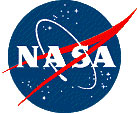 NASA Tropical Cloud Systems and Processes experiment (TCSP)
NASA Tropical Cloud Systems and Processes experiment (TCSP)
NASA to Study Severe Storms Near Costa Rica
Tropical Cloud Systems and Processes Mission
The Tropical Cloud Systems and Processes mission (TCSP), conducted by NASA
and the National Oceanic and Atmospheric Administration (NOAA) in Costa Rica
throughout July 2005, permits close, extensive study of the genesis of one of
the world's most dangerous weather formations -- the hurricane.
They will be monitoring oceanic thunderstorms to study why some thunderstorms
develop into tropical cyclones and some do not. Understanding how
hurricanes and other tropical storms are formed and intensify could
dramatically improve weather forecasting capabilities and better
safeguard human lives and property.
The 28-day field mission, sponsored by NASA's Science Mission Directorate
at NASA Headquarters in Washington, primarily is intended to document
"cyclogenesis" in action - the interaction of temperature, humidity,
precipitation, wind and air pressure that creates ideal birthing
conditions for tropical storms, hurricanes and related phenomena.
In the Atlantic Ocean, cyclogenesis often occurs off the western coast of
Africa, too far from land to permit effective, long-duration flight
investigations. In the eastern Pacific near Costa Rica, however,
researchers may be able to document the entire process, from formation of
the initial disturbance through, in some cases, expansion into a hurricane.
Data gathered during the mission is expected to provide Earth science
researchers and meteorologists with new insights into how these violent
weather systems evolve, sustain themselves and travel across vast tracts
of ocean and land. This new insight could help researchers develop more
accurate warning systems, reducing the likelihood of false alarms. Most
importantly, earlier warning of approaching severe weather conditions will
provide ample reaction time, giving coastal and inland residents enough
time to secure their property, take flood-prevention procedures and move
to safe ground.
This study continues NASA's successful Convection and Moisture
Experiment, or CAMEX research series, conducted between 1998 and 2001 by
NASA with NOAA partnership.
Now, researchers from NASA, NOAA and the Costa Rican Centro Nacional de
Alta Tecnologia (CENAT) are conducting field operations in the Central
American nation. Roughly 19,700 square miles, about the size of West
Virginia, Costa Rica is bordered to the west by the Pacific and to the
east by the Caribbean Sea. With a rainy season that stretches through
seven or eight months of the year, the region is an ideal site for
hurricane research. Around fifteen tropical storms and hurricanes are
born near the western coast that impact the Eastern Pacific. This
location permits the study of hurricane initiation and intensification in
a more compact geographical region than the Atlantic
Ocean.
Working from Juan Santa Maria Airport in San Jose, Costa Rica, the
hurricane team is conducting ground-based and airborne studies to measure
the buildup and behavior of tropical storm systems before they evolve
into life-threatening hurricanes.
A number of missions will be flown over the region, using NASA's ER-2 and
NOAA's WP-3D Orion aircraft and unmanned aerial vehicles called
"aerosondes," managed in conjunction with the University of Colorado at
Boulder. The airborne experiments will collect temperature, humidity,
precipitation, and wind information related to tropical cyclones and other
phenomena that often lead to development of more powerful storms at sea.
NASA and the Instituto Meteorologico Nacional (IMN) of Costa Rica also
will launch a series of RS-92 series "sondes," or balloon-borne probes,
to measure humidity and other data related to tropical storm origins.
Researchers also are taking advantage of their proximity to the Caribbean
and the western Gulf of Mexico, and intend to study tropical systems off
Costa Rica's eastern shores during more mature phases of development,
should hurricanes or tropical storm systems develop during their
month-long stay in the field.
About the participants
NASA mission participants include :
Ames Research Center in Moffett Field., Calif.
Dryden Flight Research Center at Edwards Air Force Base, Calif.
Goddard Space Flight Center in Greenbelt, Md.
Jet Propulsion Laboratory in Pasadena, Calif.
Marshall Space Flight Center in Huntsville, Ala.
and the National Space Science and Technology Center in Huntsville, a
joint research facility managed by the Marshall Center and the University of
Alabama in Huntsville.
The Goddard and Marshall Centers share lead
responsibility for implementing NASA's research mission. The Dryden
Center manages all ER-2 research aircraft for the agency. The Ames
Research Center is providing overall project management.
Other partners include :
Hurricane Research Division of NOAA's Atlantic
Oceanographic and Meteorological Laboratory in Miami
10 American universities
the Center for Advanced Technology in San Jose
the National Meteorological Institute of Costa Rica.
For more information about the Tropical Cloud Systems and Processes
mission, visit:
NASA hurricane page
TCSP experiment home page
NOAA Hurricane Research Division
For information about NASA and agency programs on the Web, visit:
NASA homepage
Updated June 23, 2005